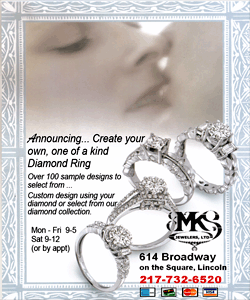|
 Suntory Pacific Ltd <SUNTYA.UL> won U.S. antitrust approval this
month to buy Jim Beam, the No. 4 premium spirits company in the
world, just as the liquor known as "America's whiskey" is enjoying a
surge in U.S. interest — and sales. Suntory Pacific Ltd <SUNTYA.UL> won U.S. antitrust approval this
month to buy Jim Beam, the No. 4 premium spirits company in the
world, just as the liquor known as "America's whiskey" is enjoying a
surge in U.S. interest — and sales.
Prices for bourbon, a type of whiskey distilled from at least 51
percent corn, have risen faster than inflation in the United States
for years. Analysts believe prices will increase from 3 percent to
10 percent annually over the next three to five years.
This is partially because bourbon, which by law must be produced in
the United States, must be aged typically for two to nine years but
sometimes for longer. That makes a sudden ramping up of production
impossible even if demand rises.
Higher corn prices in recent years raised production costs, although
the impact varied depending on how companies sourced their supplies.
Jim Beam's website says its bourbon is made of "at least 51 percent"
corn, mixed with yeast and smaller amounts of barley, malt and rye.
Beverage industry analysts said Suntory's $16 billion deal for Beam
Inc. <BEAM.N> won't by itself make pricing worse.

COCKTAIL CRAZE
American consumers have lately regained interest in cocktails,
translating to sales for spirits such as bourbon.
Bourbon makers sold 6.8 percent more in 2013 than in 2012 in the
United States, with revenue jumping 10.2 percent to $2.4 billion,
according to the Distilled Spirits Council of the United States.
About 18 million 9-liter cases of bourbon were sold in 2013.
Premium and super-premium spirits saw the biggest increases. The
most expensive bourbon, also the hardest to find, was Pappy Van
Winkle's Family Reserve from Sazerac Co Inc. A 70-centiliter bottle
of the 23-year-old Kentucky whiskey goes for $500 or more, and
prices are higher on the secondary market.
Sales of cheaper spirits fell in 2013 but sales of high-end brands
rose by 7.2 percent and sales of super-premium products rose by 6.3
percent, said the council.
CRAFT LEADS TO CACHET
Just as interest and sales of craft beer rose even when major
breweries consolidated over the past decade, craft bourbon took off
despite the rise of behemoth spirits distributors.
Though the term craft is associated with an artisanal touch, no
legal definition exists and some bigger companies disagree that
small whiskey makers take more care with their products. The
American Craft Distillers Association, however, limits membership to
distilleries that sell about 42,000 cases or fewer each year.
Craft bourbons, while maybe 1 percent of the market, give the drink
a cachet that touches even a brand name like Jim Beam. Some of the
better-known craft distilleries include Garrison Brothers in Texas;
Prichard's in Tennessee, and Willett in Bardstown, Kentucky.
[to top of second column] |

Beam's stable includes small-batch labels such as Knob Creek,
Booker's and Basil Hayden's.
The growth in the number of distilleries came after years of
little interest in whiskeys and bourbons that led dozens of
producers to shut down, said Tom Fischer, host of an online
television show and website, Bourbonblog.com.
"There about 400 to 500 craft distilleries that are on the map right
now. We just see them popping up everywhere," said Fischer. "We're
seeing it more and more with the cocktail culture. When I started
this blog about 10 years ago, people were a little into bourbon and
now they're crazy into bourbon. It's just going to grow."
WHEN CONGLOMERATES COLLIDE
Jim Beam as a brand began when corn farmer Jacob Beam distilled his
first whiskey in 1795 in Bullitt County, Kentucky, where it is still
made.
Beam Inc, its holding company, was part of Fortune Brands until
2011. The global vodka, tequila and whiskey powerhouse is
headquartered near Chicago and is the second-biggest in sales in the
United States.
Like Suntory, Beam grew largely by acquisition. In 2005, it bought
Mexico's Sauza tequila company; Laphroaig single malt Scotch whisky;
premium Kentucky bourbon Maker's Mark, and other liquor labels.
Suntory was founded in 1899 when store owner Shinjiro Torii decided
to make wine. It has a large stable of alcoholic brands, among them
the vivid-green, melon-flavored liqueur Midori.

Acquiring Beam would make Suntory the third-largest distiller
globally, after Diageo Plc <DGE.L> of Britain and Pernod Ricard <PERP.PA>
of France. The Suntory-Beam merger, which was announced in January,
would give Suntory about 11 percent of the U.S. market, up from just
one percent.
Suntory, which won U.S. approval for the deal on March 5, is
awaiting approval from the European Union. The merger was expected
to close in April.
(Editing by Ros Krasny and Amanda Kwan)
[© 2014 Thomson Reuters. All rights
reserved.] Copyright 2014 Reuters. All rights reserved. This material may not be published,
broadcast, rewritten or redistributed. |